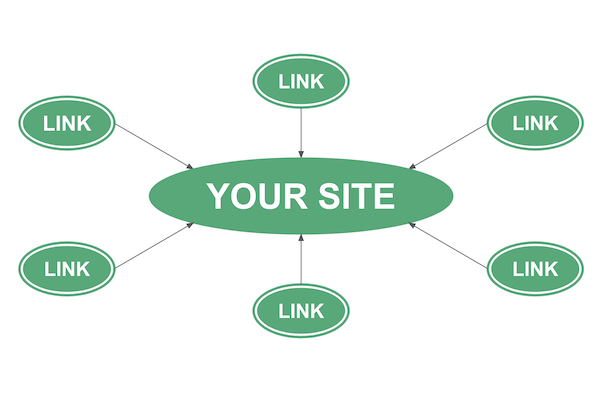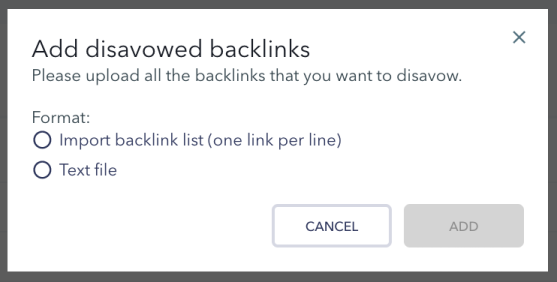
Small businesses can reap the benefits of search engine optimization. Organic traffic is the most popular referral source. Direct traffic comes from people bookmarking your URL or typing it into their browser. If searchers cannot find your website on the first page of Google, they will still find it through the search engines. SEO will help you rank higher in search results. This can result in more organic traffic as well as more sales. Here are some tips to make your website more visible in search results:
Links are the lifeblood for a website's search engine optimization (SEO).
The best way to get links to your website is to create top content. You can attract links with podcasts, infographics, blog posts, and other content. Your content is favoured by other websites when you have links. The more links you have, the higher your site's quality and value. These are great ways to create and submit press releases, business directory submissions, and generate content as a guest blogger on third-party sites.
Blog posts are a great way for your website to stay current
A blog is an important tool for small businesses. It builds clout and trust in the industry, which leads to higher conversion rates. A blog allows businesses to display a more personal side while still maintaining their corporate standards and vision. A blog can help small businesses stand out and increase sales by allowing them to be more visible. Start blogging today!

SEO strategy should include technical audits.
A technical audit can be a crucial part of any SEO strategy. A technical audit can reveal many problems with a website. In one case, a company broke down its content in seven domains that each had their own SEO power. The company did not have a proper migration plan and redesigned the site. It left behind thousands of pages and hundreds upon thousands of inbound linking. What did the result look like? The website is not ranked well on Google or other search engines.
Designing a logical website structure
One of the most effective SEO strategies for small businesses is creating a logical website structure. It is important to have a home, services, and pages for each service. The structure of most websites follows a pyramid pattern, with the homepage at top. Google can index your site easily if you have a well-organized website structure. It also helps to prevent duplicate pages competing for the same keywords. You should also index the most important pages first, so they are higher up in the search results.
Long-tail keywords drive organic traffic
While you might think it's hard to compete with giants like Amazon or Google, your small business can benefit from using long-tail keywords. Long-tail keywords can be search phrases that contain at least four words. These search terms are more specific and can be used to target a larger audience. Long-tail keywords can also be found in Google Analytics.

FAQ
What is an SEO Campaign, and what are its benefits?
An SEO campaign is a series of activities designed to improve the visibility of a particular webpage or domain name in search engines like Google, Bing, Yahoo, and others. These activities include optimizing URL structure, title tags, meta description tag, URL structure, pages content, images and internal links.
SEO campaigns typically begin with keyword research, identifying keywords likely to increase organic traffic. Once keywords have been found, they need to be optimized for the entire site, from the homepage through individual pages.
What is an SEO campaign?
Content is an essential component of any website. Search engines won't rank your site high enough if you don't include relevant and helpful information.
An SEO campaign optimizes your site by getting links from other websites back to yours. It also includes social media optimization, which involves using Twitter, Facebook, and LinkedIn to help drive traffic and increase brand awareness.
These will increase your website's visibility and help you rank higher in search engines. SEO campaigns' main goal is to build quality links back on your site, so that Google can recognize that your website has value.
What are the different SEO strategies?
There are many types of SEO strategies, such as search engine optimization or social media optimization (SEO), or pay-per–click advertising (PPC).
SEO allows you to optimize content for specific keywords by using text formatting and HTML code.
This helps make sure your site appears higher on search results pages.
Social media optimization (SMO), on the other hand, is optimizing your website to be seen on social networks like Twitter, Facebook and Google+.
These can help you build your online reputation and increase traffic to your site when people search for related topics.
PPC ads are also displayed at the top search results pages and show relevant products or services.
The most common type of PPC ad is an advertisement on Google paid search. These ads cost money, but are extremely effective.
There are many other types of PPC advertising, including video ads, display ads and sponsored posts.
How Long does it take for PPC Advertising results to show up?
Paid search results are more time-consuming than organic search results. This is because there is no natural flow. When someone searches for something, they expect to see the most relevant results at the top of the page. Paid search results must work harder to convince people that they should pay money to advertise on their site.
Why SEO strategy is so important
Search engine optimization (SEO), which aims to increase traffic to your site through the use of Google to help people find you, is the primary goal.
Search engines like Google!, Yahoo!, Bing!, and others save information about websites using servers called "crawlers," that send this data back into the company’s central database. This allows them index web pages for search purposes.
You will get more visitors to your site if it appears higher in the search results. You won't be seen in these searches.
To ensure that your website is found by search engines, ranking high on all major search engines is the best method. There are two main methods to achieve this: paid advertising or natural organic links.
Paid Advertisement - This is where companies pay per-click online ads that appear above other sites when searching for information. These ads include banner ads (text ads), pop-ups, widgets for e-commerce, and others.
Natural Organic Links: These are links where you have created a great site over time, and gained trust from your industry. Through blogging, guest posting and commenting, you can build links over time.
To remain ahead of the pack, it is important to invest continuously in both forms marketing.
Where do I get my keywords from?
First, you need to think about the type of products and services that you offer. Next, search for terms related to these things. Once you have your list of phrases in hand, you can use Google Keyword Planner tools to identify the phrases people search for. Or you can go straight to search engines like Bing or Yahoo.
Google Adwords - Can I Increase Sales?
Google AdWords, a popular tool for marketers looking to promote their products and/or services online, is very popular. Users click on sponsored advertisements and then visit websites associated with those ads. This helps generate sales leads for businesses.
Statistics
- And 90%+ of these backlinks cite a specific stat from my post: (backlinko.com)
- If two people in 10 clicks go to your site as a result, that is a 20% CTR. (semrush.com)
- A 62.60% organic traffic boost to that page: (backlinko.com)
- These guides are designed and coded 100% from scratch using WordPress. (backlinko.com)
- Deleting those 10k pages is one of the main reasons that he improved his site's organic traffic by nearly 90%: (backlinko.com)
External Links
How To
How do I start my first blog.
It's simple! WordPress is a powerful tool for creating blogs. You can edit the appearance of your blog by creating themes, changing fonts, colors, or customizing it. They can also add plugins that allow them to automatically change certain aspects of their website depending on visitor activity.
You can download many templates free of charge from WordPress.org. Premium templates cost money. Premium templates come with additional features such as extra pages, extra plugins, and advanced security.
Once you have downloaded the template you need to sign-up for a free account. This will allow you to upload files and maintain your blog. There are many hosts that offer free accounts. However, there may be restrictions on how much storage you can use, the number of domains you can host, or how many emails can you send.
If you wish to use more than one domain, you will need to purchase additional email addresses. Some hosts charge a monthly fee for this service.
You might be new to blogging and wonder why it is worth paying to have your blog hosted online. Most hosts offer unlimited storage space, meaning your files won't be deleted even if you accidentally delete them.
Many hosts let you host multiple domains. That means that you can have different websites under the same hosting plan. You can avoid signing up for multiple email accounts and maintain all your sites through one interface.
Some hosts include social media sharing buttons on their dashboards, allowing visitors to share posts across the internet quickly and easily.
Hosting providers usually offer tools to manage your blog. You can see your site's performance stats and compare it to other blogs.
These tools can make managing a blog easier and more effective, so you should look into them before choosing a hosting package.
To sum up:
-
Choose a topic pertinent to your business.
-
Create engaging content;
-
Optimize your site using SEO techniques;
-
Promote your site using social media channels;
-
To make necessary changes, keep an eye on your statistics.
-
Don't forget to update the blog often.
You should create high-quality content, market it effectively, and monitor its success.